In modern machining, speed and accuracy are everything. Whether you’re producing parts in a CNC workshop or managing large-scale manufacturing, the quality of your cutting tools directly affects your output, costs, and product quality.
That’s why more industries are switching from traditional tools to tungsten carbide cutting tools.
But what makes them so special? And how exactly do they improve your machining performance?
1. What Is Tungsten Carbide?
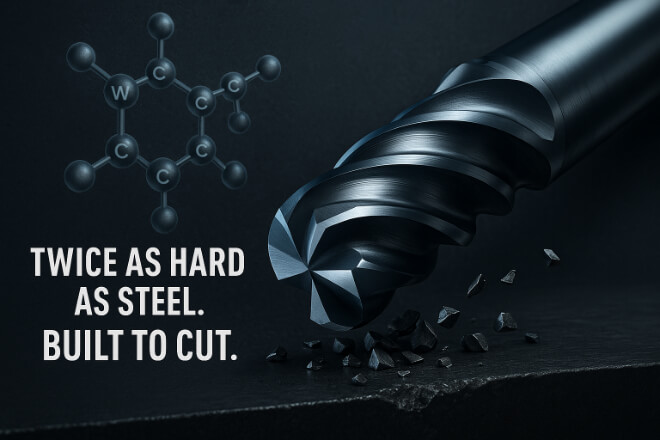
Tungsten carbide is a compound made from tungsten and carbon atoms. It’s extremely hard—nearly twice as hard as steel, and it can handle high temperatures without softening.
In fact, it’s one of the hardest materials used in manufacturing, only behind diamonds and a few advanced ceramics.
These properties make it perfect for cutting tools used in milling, turning, drilling, and grinding.
While high-speed steel (HSS) tools are cheaper, carbide tools stay sharper, cut faster, and last much longer—especially under tough machining conditions or with difficult materials.
2. Why Cutting Tools Matter in Machining
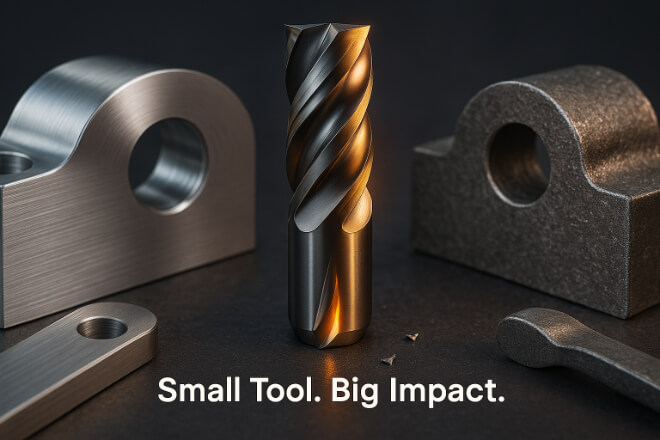
It’s easy to overlook cutting tools—they’re small and often just one part of a larger machine. But they play a huge role in how efficient and precise your operations are.
Using the wrong tool can result in:
Rough surface finishes
Increased tool breakage
Frequent machine downtime
Higher production costs
Excess material waste
Safety concerns from tool failure
The right tungsten carbide tool gives you:
Faster cycle times
Better part accuracy
Less tool wear and fewer replacements
Higher-quality results
Greater productivity from each machine shift
For shops focused on growth, profitability, and precision, cutting tools are not just accessories—they’re critical components of the entire machining system.
3. How Tungsten Carbide Improves Machining Efficiency
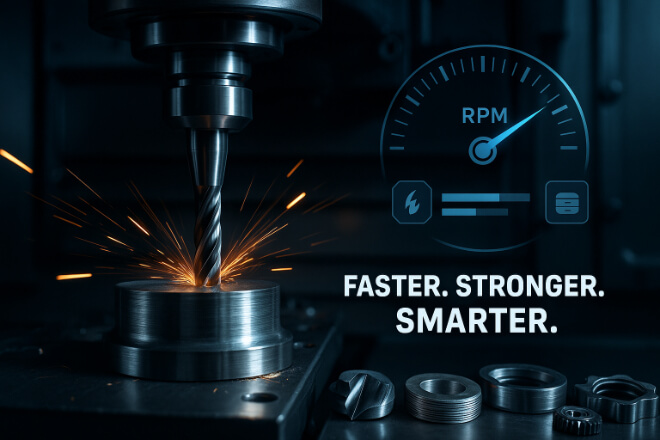
Let’s explore how carbide cutting tools specifically improve the efficiency of your machining process:
1). Faster Cutting Speeds
Tungsten carbide tools can handle much higher cutting speeds compared to steel tools. This allows you to:
Run machines at higher RPM
Use aggressive feed rates
Remove material faster
Complete jobs in less time
Especially in high-volume production environments, this increase in speed can translate into thousands of dollars in saved labor and machine hours each month.
2). Fewer Tool Changes
Carbide tools resist heat and abrasion much better than HSS tools. This leads to:
Less frequent tool changes
Reduced interruption of production
Lower risk of human error during tool change
Longer machine runtime per shift
Even though the initial cost of carbide is higher, the extended tool life and reduced handling requirements make them more cost-effective in the long run.
3). Consistent Tool Performance
Carbide tools stay sharper longer and maintain consistent cutting performance—even when machining hard materials like titanium, Inconel, or tool steel. This consistency results in:
Uniform surface quality across large batches
Reliable part tolerances
Fewer scrap parts or rework
Stable process parameters over time
This is especially important in industries where quality must be guaranteed for safety or regulatory reasons.
4). Support for Automated Machining
As more factories shift toward automation and lights-out manufacturing, cutting tools must keep up. Carbide is ideal for these systems because:
It works at high speeds and feed rates
It resists tool deflection and heat damage
It supports robotic tool changers and unmanned cycles
It minimizes unexpected tool failures that can stop production
Carbide tooling is automation-ready, helping manufacturers improve output without increasing headcount.
4. How Carbide Tools Improve Precision
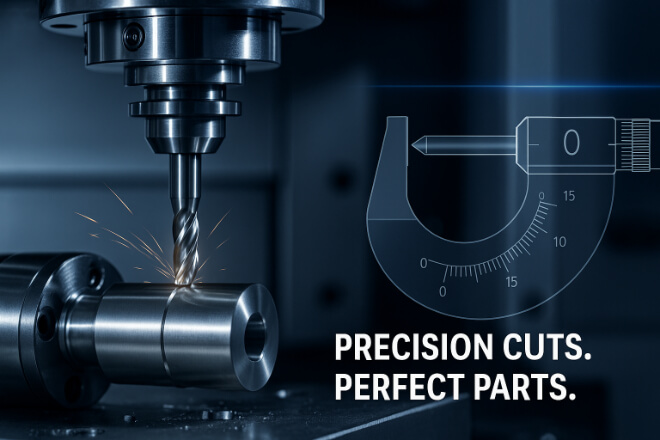
Speed is great—but what about accuracy? Here’s where tungsten carbide truly shines.
1). Tighter Tolerances
Carbide’s hardness and stiffness allow for precise cuts with minimal tool deflection. This helps achieve:
Micron-level tolerances
Perfect part geometry
Better fitment with other components
Consistent results from part to part
2). Cleaner Surface Finishes
A sharp carbide tool generates less vibration and tearing at the cut surface. This results in:
Smoother finishes
Less need for post-processing or polishing
Better coating adhesion for plated or painted parts
Enhanced aesthetics and surface integrity
3). Less Heat-Related Distortion
Tungsten carbide dissipates heat effectively and resists softening at high temperatures. That means:
Less risk of thermal warping
More accurate cuts on thin or heat-sensitive parts
Extended tool life in dry or semi-dry machining
Reduced thermal load on your CNC spindle
In industries where even small inaccuracies matter, carbide is the preferred material for reliable results.
5. Real-World Example: CNC Shop Output Comparison
Here’s a quick example showing the difference in performance between HSS and carbide tools:
| Tool Type | Cycle Time (mins) | Parts per Shift | Surface Finish Quality | Tool Life |
|---|---|---|---|---|
| HSS End Mill | 12 | 40 | Medium | 3–5 hours |
| Carbide End Mill | 5 | 100+ | Excellent | 15–20 hours |
Result: The shop more than doubled its daily output, improved surface quality, and reduced tool replacements—all by switching to tungsten carbide.
6. Common Applications That Benefit Most
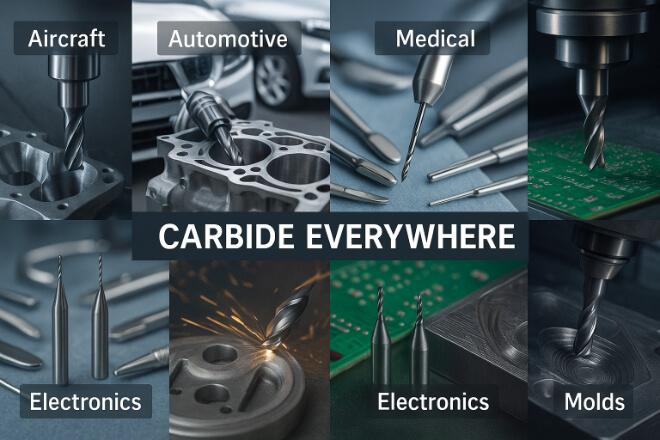
Tungsten carbide cutting tools are trusted across many industries. Here’s a look at where they shine the most:
1). Aerospace
Precision cutting of titanium and superalloys
High-speed milling of turbine blades
Maintaining tolerances under high thermal loads
2). Automotive
Machining engine blocks, brake components, and gears
Supporting large-scale production with minimal tool wear
Enhancing finish quality for critical fits
3). Medical Devices
Creating surgical implants with strict tolerances
Micro-drilling fine holes in stainless or cobalt-chrome
Ensuring consistent, burr-free cuts
High-precision routing and drilling
Clean cuts on delicate copper and composite materials
Maintaining accuracy at miniature scales
5). Mold and Die
Engraving hardened steel and tool steels
Supporting both roughing and fine finishing operations
Reducing tool breakage in deep cavities
6). Oil and Gas
Cutting corrosion-resistant alloys
Maintaining tool integrity in harsh drilling conditions
Improving uptime in field machining
7). Woodworking
Cutting MDF, plywood, and composites
Longer edge life even with abrasive boards
Cleaner finish with fewer passes
8). Watchmaking and Jewelry
Precision engraving of metals and gemstones
Ultra-fine detail milling and micro-shaping
Delicate work with maximum control
7. What to Consider When Choosing Carbide Tools
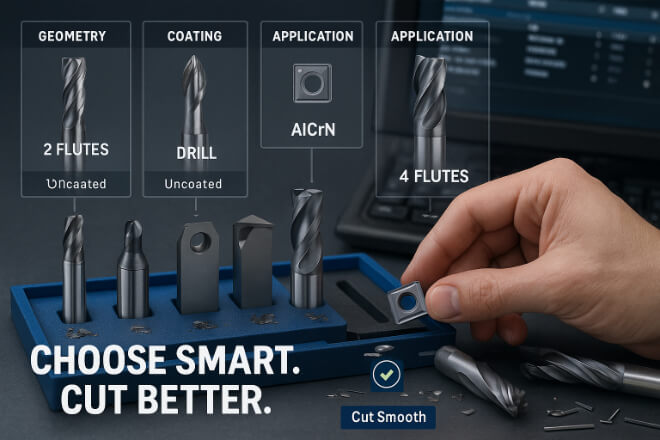
To unlock full performance, you need the right carbide tool for your application. Focus on:
Material compatibility – Some coatings work better with steel, others with aluminum
Geometry – Choose correct flute count, rake angle, and corner radius for each task
Machine capability – Match tool design with spindle power, RPM range, and rigidity
Coolant needs – Some tools are optimized for dry machining, others for flood coolant
Coating type – TiAlN, AlCrN, DLC, and others improve heat resistance and chip control
8. Is Tungsten Carbide Worth the Investment?

In one word: yes.
While the initial price of carbide tools is higher than HSS, the long-term benefits are hard to ignore:
Reduced tooling cost per part
Higher machine uptime
Better quality control
Lower scrap and rework rates
Faster ROI on equipment and labor
Carbide tools pay for themselves quickly, especially in competitive industries where efficiency and quality make or break a business.
Final Thoughts
If your shop is aiming to cut faster, reduce waste, and improve part accuracy, tungsten carbide cutting tools are the answer.
Their strength, speed, and precision make them a smart upgrade for almost every machining operation.
Whether you’re milling aluminum, drilling titanium, or cutting plastics, carbide will help you do it better—and smarter.
If you want to know more details about any company, please feel free to contact us.
